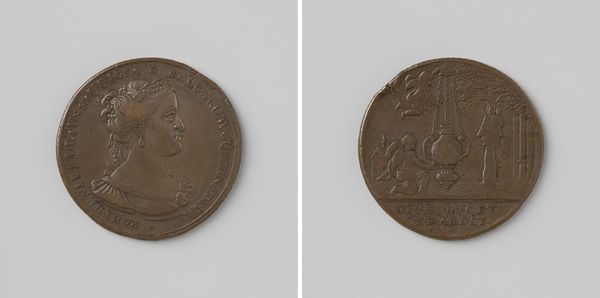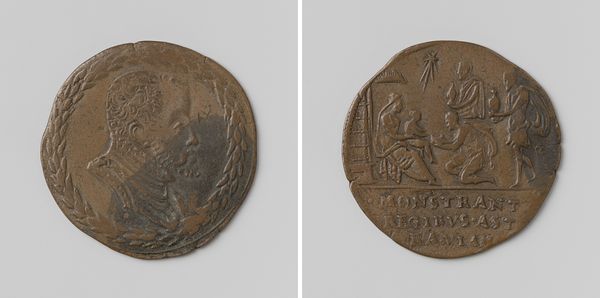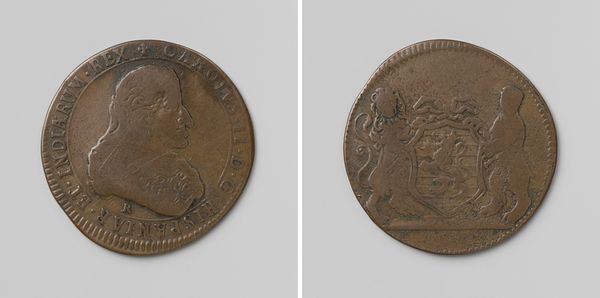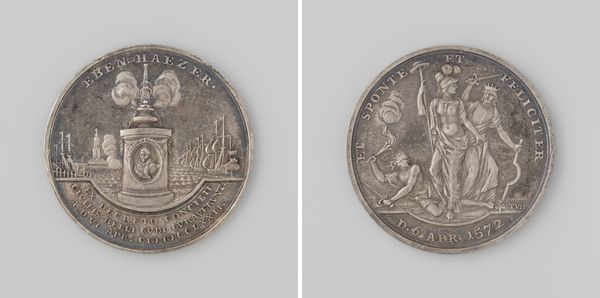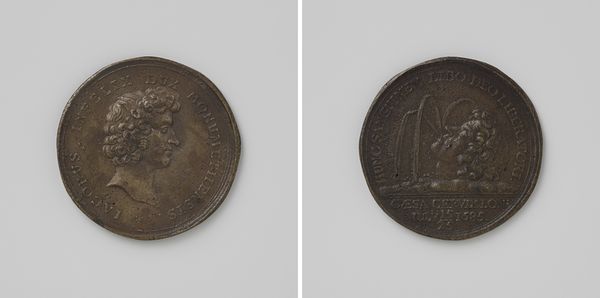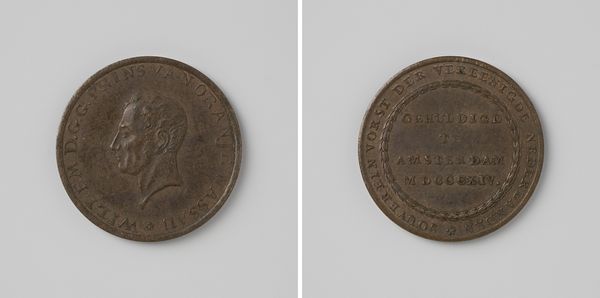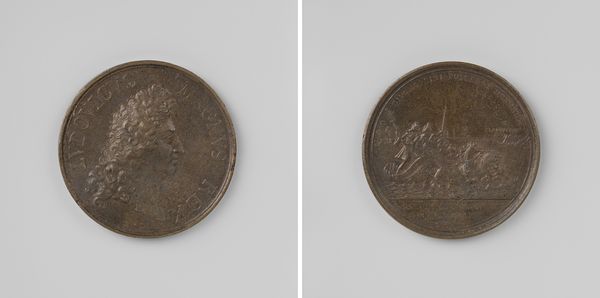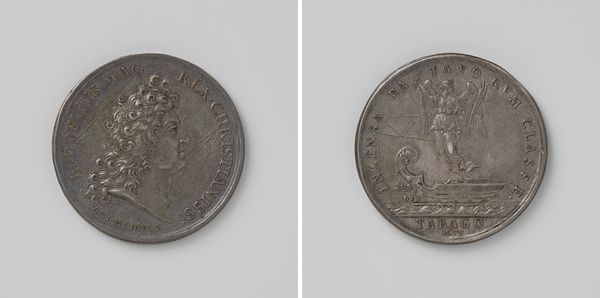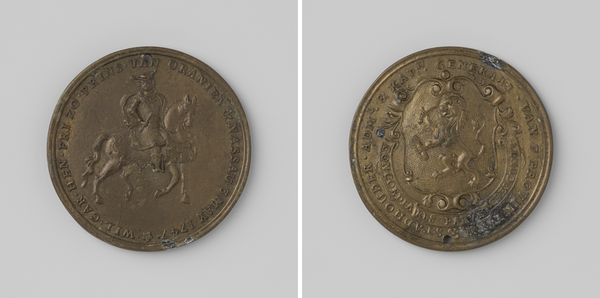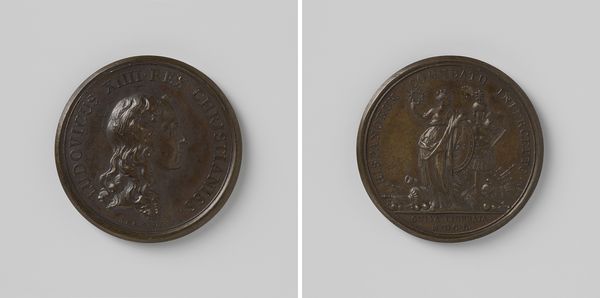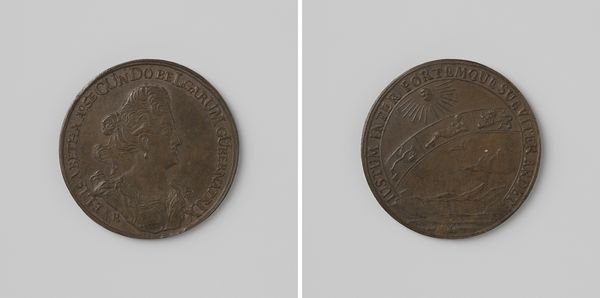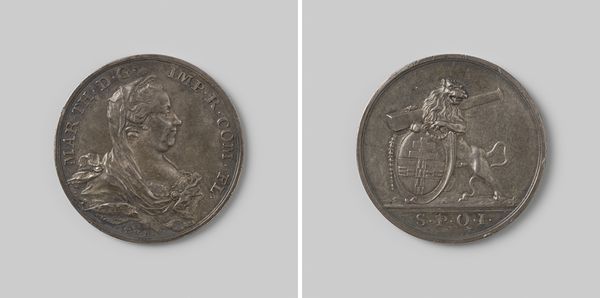
Filips II, koning van Spanje, rekenpenning van de raad van Financiën 1562
0:00
0:00
metal, relief, sculpture
#
portrait
#
metal
#
sculpture
#
relief
#
11_renaissance
#
sculpture
#
carved
#
history-painting
Dimensions: diameter 2.9 cm, weight 4.57 gr
Copyright: Rijks Museum: Open Domain
Curator: Well, isn’t this fascinating? I'm immediately drawn to its weighty presence; a small bronze disc, but it feels so laden with history, like a little time capsule whispering secrets. Editor: Indeed. We are looking at a 1562 bronze medal from the Rijksmuseum collection. The full title translates to "Philip II, King of Spain, jeton of the Council of Finance." It’s unsigned, placing it in the anonymous category. But oh, it speaks volumes about power, finance, and representation. Curator: A jeton, you say? I imagine someone important holding this in their palm, making a financial decision that ripples outwards. One side is stern Philip, laurel-wreathed like a Caesar, looking to the future. The other depicts what seems to be the Adoration of the Magi. Seems like it has little to do with money, but so powerful to impose the King's will. Editor: Ah, but consider this: the depiction of the Adoration suggests a divinely sanctioned kingship. The Magi offer gifts—wealth, power, loyalty. This visually links Philip's financial council with the notion of divinely ordained rule and the inflow of riches to the kingdom. Power always needs narratives, doesn't it? Curator: So, we're not just looking at currency or even commemoration but propaganda? A way to assert power through religious iconography intertwined with the cold, hard world of finance. The artist, even unnamed, seems quite deft at melding these elements. Editor: Absolutely! The choice of bronze is significant as well. It speaks of permanence, of endurance. Every detail, from the Latin inscription "Monstrat regibus astra viam" – "The stars show the way to the kings," adds layers of meaning related to power. This work, carved, compressed into a circle, served the King and his perception as an important figure of his era. Curator: You are right. It’s so interesting to think about these objects – small, functional things intended for counting – becoming little symbolic battlefields, expressing the King’s will as though everything in the Kingdom served his ambitions. This piece is like a visual puzzle to think and discuss through an afternoon. Editor: Yes, this jeton condenses religion, authority, and money, mirroring an early iteration of capitalism sanctioned by nothing less than heaven itself. What is not interesting is how such small artwork can inform our contemporary anxieties about money and politics.
Comments
No comments
Be the first to comment and join the conversation on the ultimate creative platform.
